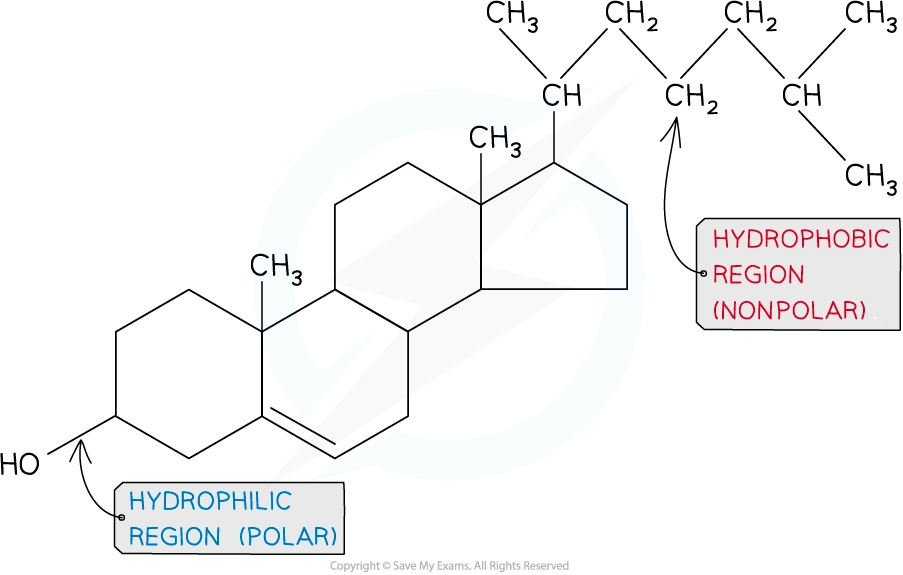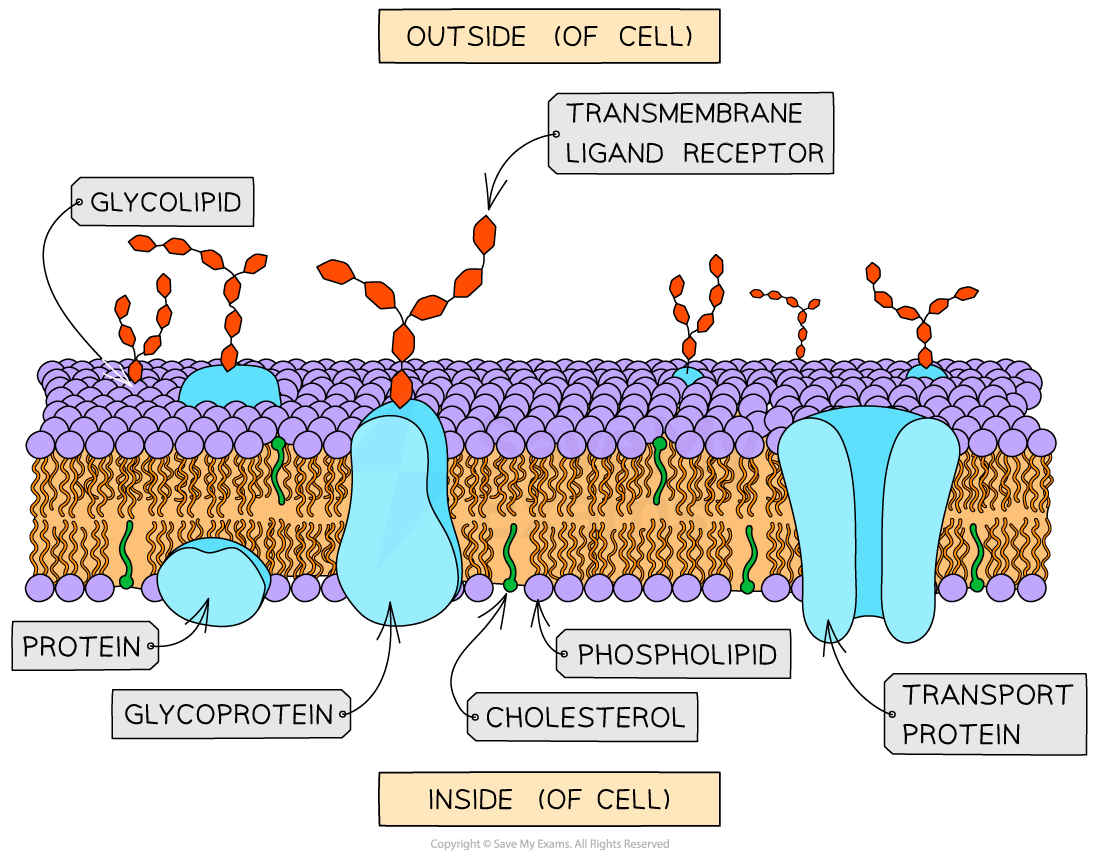Components of Cell Surface Membranes (Cambridge (CIE) A Level Biology): Revision Note
Exam code: 9700
Phospholipids, cholesterol, glycolipids, proteins & glycoproteins
The cell membranes of all organisms generally have a similar structure
Cell membranes contain several different types of molecules:
Three types of lipid:
Phospholipids
Cholesterol
Glycolipids (also containing carbohydrates)
Two types of proteins:
Glycoproteins (also containing carbohydrates)
Other proteins (e.g., transport proteins)
Phospholipids:
Form a bilayer (two layers of phospholipid molecules)
Hydrophobic tails (fatty acid chains) point in towards the membrane interior
Hydrophilic heads (phosphate groups) point out towards the membrane surface
Individual phospholipid molecules can move around within their own monolayers by diffusion
Cholesterol:
Cholesterol molecules also have hydrophobic tails and hydrophilic heads
Cholesterol fits between phospholipid molecules and orientated the same way (head out, tail in)
It is only found in eukaryotic membranes; it is absent in prokaryotes membranes

Glycolipids:
These are lipids with carbohydrate chains attached
These carbohydrate chains project out into whatever fluid is surrounding the cell (they are found on the outer phospholipid monolayer)
Glycoproteins:
These are proteins with carbohydrate chains attached
These carbohydrate chains also project out into whatever fluid is surrounding the cell (they are found on the outer phospholipid monolayer)
Proteins:
The proteins embedded within the membrane are known as intrinsic proteins (or integral proteins)
They can be located in the inner or outer phospholipid monolayer
Most commonly, they span the entire membrane – these are known as transmembrane proteins
Transport proteins are an example of transmembrane proteins as they cross the whole membrane
Proteins can also be found on the inner or outer surface of the membrane, these are known as extrinsic proteins (or peripheral proteins)

Examiner Tips and Tricks
Make sure you can draw and label all the above structures on a diagram of the fluid mosaic model of cell membranes. You also need to be able to state the functions of the structures.


Unlock more, it's free!
Did this page help you?